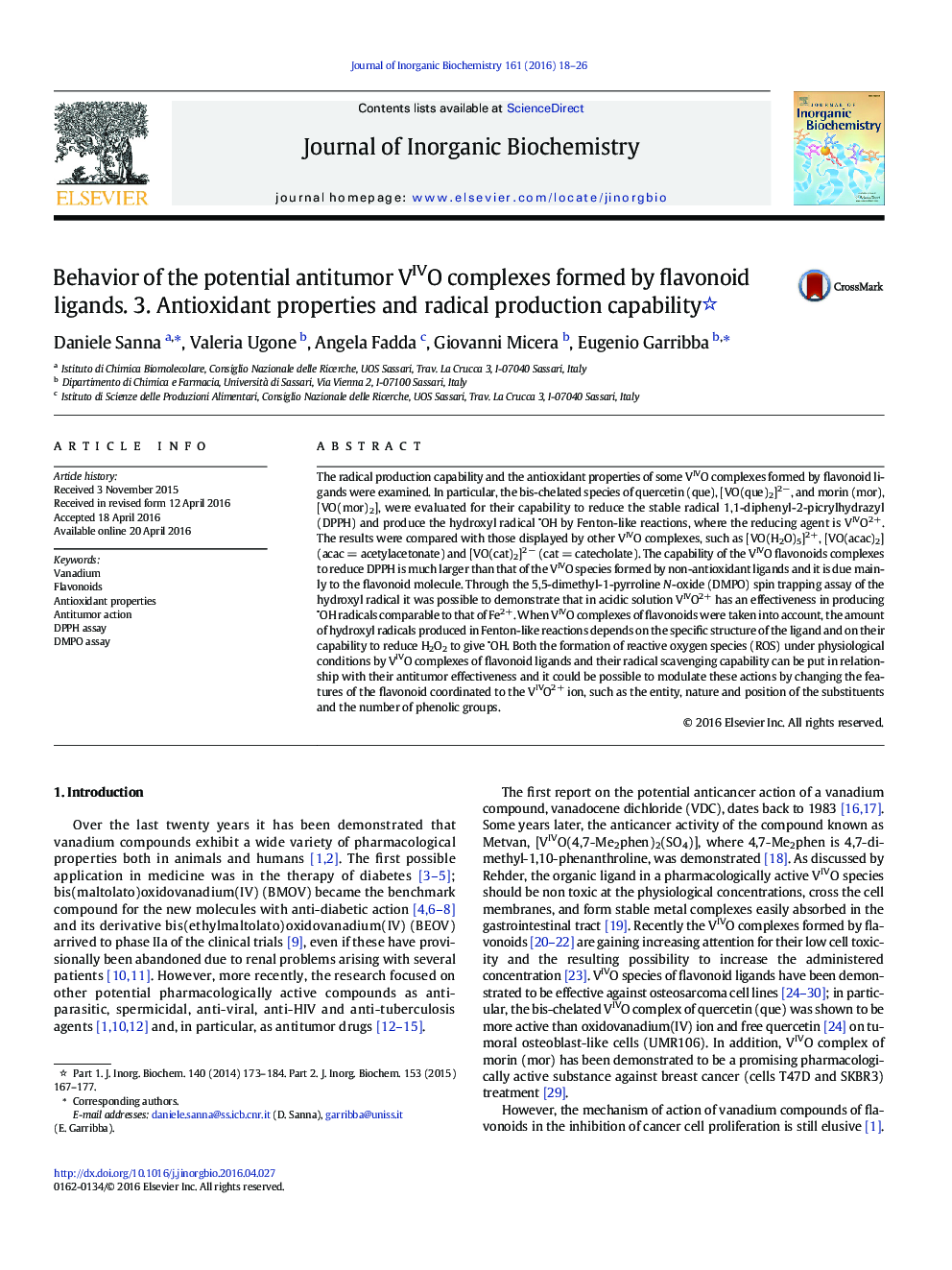| کد مقاله | کد نشریه | سال انتشار | مقاله انگلیسی | نسخه تمام متن |
|---|---|---|---|---|
| 1315799 | 1499426 | 2016 | 9 صفحه PDF | دانلود رایگان |

• The antioxidant properties of VIVO complexes formed by flavonoids were examined.
• The capability to reduce the 1,1-diphenyl-2-picrylhydrazyl (DPPH) radical was studied.
• The capability to produce the
• OH radical in Fenton-like reaction was described.
• The results were compared with those obtained with the aquaion [VO(H2O)5]2+.
• The results were also compared with [VO(acetylacetonato)2] and [VO(catecholato)2]2−.
The radical production capability and the antioxidant properties of some VIVO complexes formed by flavonoid ligands were examined. In particular, the bis-chelated species of quercetin (que), [VO(que)2]2 −, and morin (mor), [VO(mor)2], were evaluated for their capability to reduce the stable radical 1,1-diphenyl-2-picrylhydrazyl (DPPH) and produce the hydroxyl radical
• OH by Fenton-like reactions, where the reducing agent is VIVO2 +. The results were compared with those displayed by other VIVO complexes, such as [VO(H2O)5]2+, [VO(acac)2] (acac = acetylacetonate) and [VO(cat)2]2 − (cat = catecholate). The capability of the VIVO flavonoids complexes to reduce DPPH is much larger than that of the VIVO species formed by non-antioxidant ligands and it is due mainly to the flavonoid molecule. Through the 5,5-dimethyl-1-pyrroline N-oxide (DMPO) spin trapping assay of the hydroxyl radical it was possible to demonstrate that in acidic solution VIVO2+ has an effectiveness in producing
• OH radicals comparable to that of Fe2+. When VIVO complexes of flavonoids were taken into account, the amount of hydroxyl radicals produced in Fenton-like reactions depends on the specific structure of the ligand and on their capability to reduce H2O2 to give
• OH. Both the formation of reactive oxygen species (ROS) under physiological conditions by VIVO complexes of flavonoid ligands and their radical scavenging capability can be put in relationship with their antitumor effectiveness and it could be possible to modulate these actions by changing the features of the flavonoid coordinated to the VIVO2+ ion, such as the entity, nature and position of the substituents and the number of phenolic groups.
The antioxidant properties and radical production capability of VIVO2+ complexes formed by flavonoids with potential antitumor activity were studied and compared with those of other VIVO2+ species. These were related to the structure of the ligand, to the number of phenolic groups and to the entity, nature and position of the substituents.Figure optionsDownload as PowerPoint slide
Journal: Journal of Inorganic Biochemistry - Volume 161, August 2016, Pages 18–26